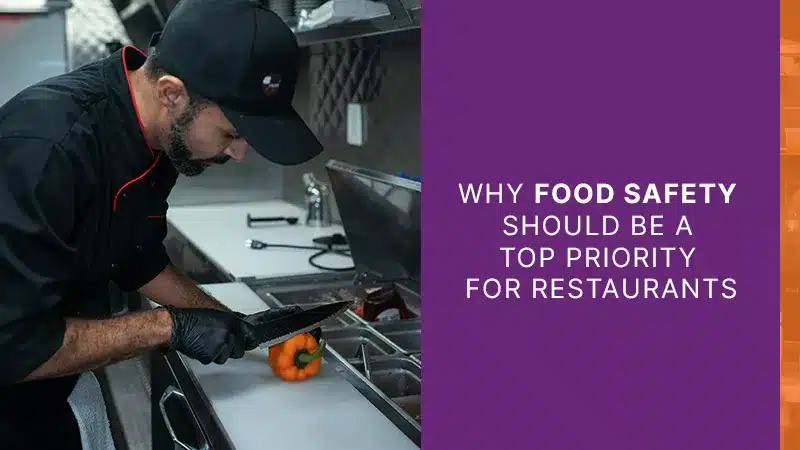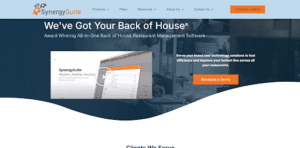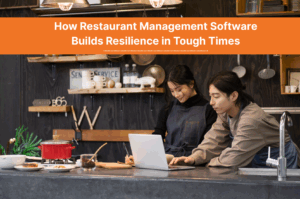In an era where dining out is a frequent pleasure, food safety emerges as a vital concern that directly impacts public health and restaurant reputation.
The consequences of neglecting food safety can range from minor inconveniences to catastrophic outbreaks of foodborne illnesses. Thus, understanding the importance of high standards for food safety becomes essential for both restaurateurs and consumers alike.
Food safety is not just a checklist for compliance; it encompasses legal responsibilities and the commitment to safeguarding customers. With increasing regulations and a heightened awareness of foodborne pathogens, restaurants must prioritize safe handling practices to protect their patrons and avoid severe legal repercussions. Furthermore, a strong reputation for safety can distinguish a restaurant in a competitive market.
This article delves into the multifaceted reasons for prioritizing food safety in restaurants, outlines essential safe handling practices, and explores how technology can streamline management.
Through a comprehensive look at food security and safety, we aim to reinforce its critical role in maintaining not only public health but also the integrity and success of the restaurant industry.
Why Is Food Safety Important?
Food safety plays a vital role in public health and economic stability, with far-reaching implications across production, handling, and consumption stages.
It plays a key role in preventing foodborne illnesses and safeguarding consumer confidence. Understanding the importance of food safety involves examining its impact on public health, the legal landscape, and business reputation.
Public Health Reasons
Foodborne illnesses are a significant public health challenge, affecting approximately 1 in 6 Americans annually and causing around 3,000 deaths. These potential risks and potential hazards are formidable, but proper standards and basic safe practices can minimize them.
Effective food safety management systems help prevent these outbreaks by controlling harmful bacteria and ensuring the correct internal temperature of foods. These measures protect public health, reduce the foodborne disease burden, and help avert costly economic impacts estimated at $17.6 billion annually due to lost productivity and medical expenses.
Coordinated efforts among health departments, federal agencies, and food handlers are critical to minimizing risks and ensuring safe food practices.
Legal Reasons
The food business has a unique public trust element. Adhering to food safety regulations is a legal necessity for food businesses. Protecting their customers from food poisoning is paramount, and endangering the health of consumers through negligence is serious.
Noncompliance can result in legal ramifications, such as class-action lawsuits from consumers harmed by unsafe food products.
Failure to meet these standards can incur severe economic penalties, impacting a company’s profitability and market access and causing reputational damage that erodes consumer trust.
Your Reputation
No restaurateur wants to be linked to an outbreak of foodborne diseases. Foodborne disease outbreaks tend to grab headlines and tap down consumer demand.
Implementing stringent food safety practices is vital for maintaining the reputation of a restaurant or food establishment.
It assures customers of protection against foodborne illnesses, thus enhancing credibility and public trust. Food safety incidents can severely damage a restaurant’s reputation, making it crucial for establishments to adhere to safe food handling practices.
Businesses that abide by high food standards foster trust among consumers and position themselves as reliable choices in the competitive food industry, minimizing risks of outbreaks and financial losses from potential lawsuits.
Steps to Food Safety
Safe food handling practices prevent foodborne illnesses and ensure consumer confidence in the food industry.
The core steps are often summarized in four main food safety procedures: clean, separate, cook, and chill. These steps are integral in mitigating risks such as cross-contamination, harmful bacteria, and foodborne diseases, thus safeguarding public health.
Clean Everything
This is common sense, but unwashed hands and unwashed equipment easily spread food-borne illnesses. Maintaining cleanliness is a vital food safety aspect.
Food handlers must wash their hands with warm water and soap for at least 20 seconds before and during food preparation.
This simple act can prevent contamination.
Also, all kitchen tools, including cutting boards and knives, should be thoroughly cleaned and dried before use. Regular disinfection of surfaces and equipment further reduces the risk of spreading bacteria, ensuring a safe food environment.
Clean water and soapy water should be staples of any food service establishment and mitigate foodborne risks.
Key Takeaway: Wash hands for 20 seconds with soap and warm water before handling food. Regularly clean kitchen tools and disinfect surfaces to prevent contamination.
Separate Certain Foods
Raw food (especially raw meat) shouldn’t be near cooked food.
Food allergens should not be near dishes meant for people with allergies to prevent an allergic reaction.
Harmful chemical substances shouldn’t be near food ever to prevent chemical contaminations.
Food contamination can be prevented by preventing cross-contamination. To prevent cross-contamination, separating raw meats, poultry, unwashed fruits, and eggs from ready-to-eat foods is essential. Using separate cutting boards and utensils for raw and cooked foods helps avoid the transfer of harmful bacteria.
Storing raw meat in sealed containers at the bottom of the fridge can prevent potential drip contamination, while using different shopping bags for raw and ready-to-eat foods further reduces contamination risk during transportation.
Key Takeaway: Store raw meats and unwashed produce separately from ready-to-eat foods to avoid cross-contamination.
Cook Thoroughly
Remember to store raw meats and unwashed produce separately from ready-to-eat foods to avoid cross-contamination.
Cooking food to the correct internal temperature is essential for killing harmful bacteria.
For instance, chicken, duck, pork, and offal should reach a core temperature of 165°F with no pink meat or clear juices. Foods such as beef and lamb can be served rare only if the outside is well-cooked at safe temperatures.
Food service professionals must understand these cooking temperature standards, as improper cooking can lead to foodborne illness outbreaks, affecting consumer confidence and public health.
Key Takeaway: Ensure foods reach safe internal temperatures (e.g., chicken at 165°F).
Chill Leftovers
Proper chilling of leftovers is crucial for preventing the growth of microorganisms that cause foodborne illnesses.
Leftover food should be kept at 41°F or below, and ready-to-eat foods should be consumed within 7 days. Cooling cooked food quickly before refrigeration helps maintain its safety. When leftovers are frozen, they can be safely consumed within two to three months. Once thawed, these foods should be eaten within 24 hours to minimize the risk of food poisoning.
Key Takeaway: Cool leftovers promptly to 41°F or below and consume within 7 days.
Create a Culture of Food Safety
Establishing a strong food safety culture within any organization involves prioritizing food safety knowledge and ensuring every employee understands the importance of safety protocols.
Developing a food safety management system based on standards like HACCP is essential. Continuous employee training, providing necessary resources, and setting clear policies and procedures are critical.
Conducting regular internal food safety inspections can ensure that proper food safety measures are second nature to food workers so they can maintain food safety awareness.
Make sure that all storage equipment is clean and well-maintained. Frozen meat, frozen food, fresh fruit, and other fresh produce need to be kept at the correct temperatures. That is only possible when all of your equipment is working properly. Keep an eye on expiration dates as well.
These actions help foster an environment where food safety is a shared responsibility, ultimately enhancing public health and economic prosperity.
Key Takeaway: Culture matters! Making food safety a part of your company culture will pay enormous dividends.
Use Software to Manage Food Safety Practices
The benefits of food safety are considerable. It’s a critical component of successful restaurant management.
With the increasing complexity of food supply chains and stringent public health regulations, the need for effective tracking of inventory and employee training has never been more vital.
Implementing robust restaurant management software, like SynergySuite’s award-winning applications, can significantly streamline these essential tasks.
With features like automated inventory tracking, HACCP compliance reports, and reminders for temperature checks, our software solutions play a pivotal role and offer a comprehensive approach to managing food safety practices.
Our apps track inventory accurately to prevent the use of expired products, schedule regular employee training, and maintain high personal hygiene standards.
Additionally, these tools can set reminders for checking the internal temperature of raw and cooked foods, thereby reducing the risk of foodborne illnesses and cross-contamination incidents.
By using advanced software, restaurants can ensure adherence to food safety management systems and boost consumer confidence in their offerings.
Such systems make it easier to implement preventive controls, thereby reducing the likelihood of foodborne illness outbreaks and contributing to both public health and economic prosperity.
Embracing technology in food safety management is essential for achieving long-term success in the food industry. Get in touch with us today for a free, personalized demo of SynergySuite’s powerful tools.






